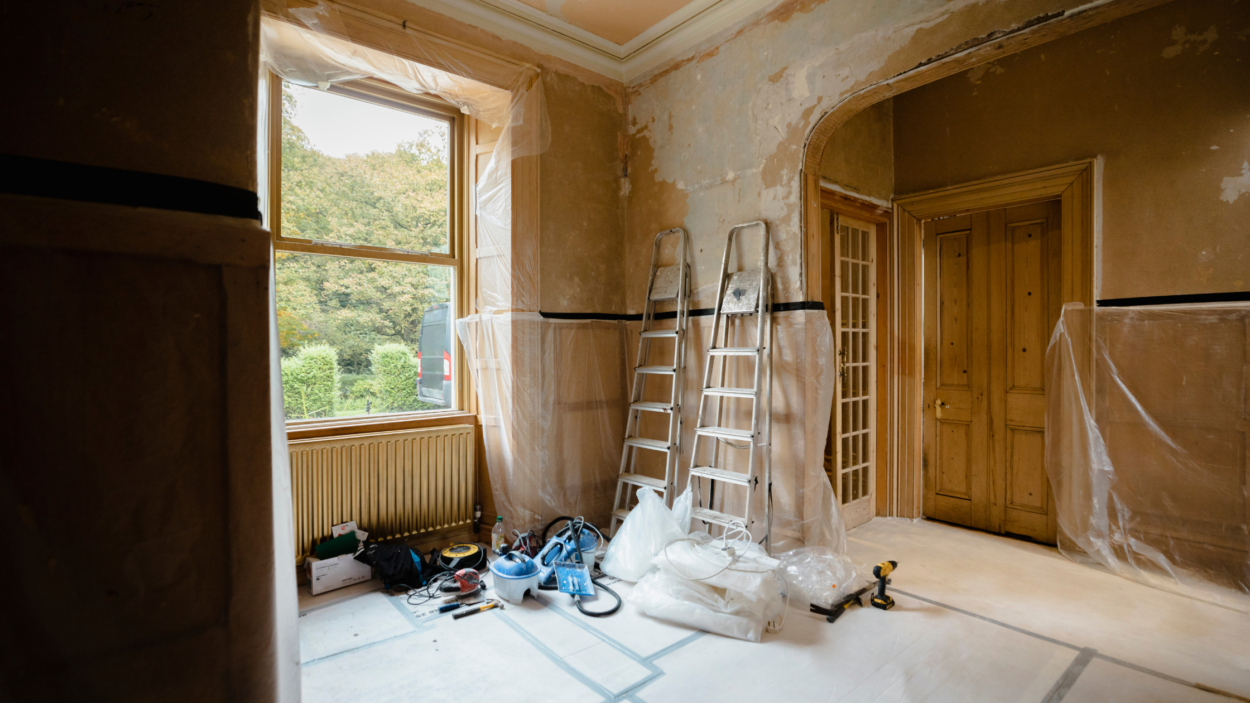Renovating an Old House in Seattle: What You Need to Know
August 30, 2022
There’s nothing quite like the charm of an older Seattle home, but sometimes renovating an old house can come with a steep cost. A proper home renovation of an old or historic home is more than replacing hardware or updating fixtures. You must consider things like original windows, heating and cooling systems, plumbing, foundation repairs and toxins.
If you’re considering a home remodeling project for your older home, it’s essential to budget for it properly. In this article, we’ll look at what you need to know before starting an old house renovation in Seattle so that your project goes smoothly and without any unpleasant surprises.
Renovating an Old House: Toxins Could Be Inside the Walls
When homes were built a hundred years ago, we didn’t have the knowledge we do today, and many homes were built using toxic chemicals. It’s important to be aware of this risk.
Asbestos
There is a higher likelihood that asbestos will be found in some of the building materials used to construct your older home, as this is often the case for homes built pre-1980s. According to the Washington State Department of Health, asbestos can be found in:
- some roofing and siding materials
- insulation
- some vinyl floor tiles
- textured paint, popcorn ceiling and patching compounds used on wall and ceiling joints
When these features are removed, asbestos can get into the air and cause significant lung damage.
Lead-Based Paint
Most homes built before 1940 had lead-based paint, and homes built as early as 1978 may also have it. Lead can cause many physical and mental problems, and children and pregnant women are most susceptible to becoming ill.
Because toxins may be present within your home, a professional contractor will need to take additional precautions during the demolition phase to remove these materials safely.
Radon
According to the Environmental Protection Agency (EPA), radon is the second leading cause of lung cancer in the United States.
The Washington State Department of Health website states, “Radon is a naturally occurring radioactive gas that is invisible, odorless, and tasteless. It comes from the radioactive decay of radium, a naturally found element in most rocks and soils. Radon can enter a building from the ground underneath it and concentrate to tens, or even hundreds, of times the level in outdoor air.”
If your home is old, a contractor will have it tested for radon before beginning any renovation project.
The Roof
The roof on a historical home isn’t just a protection from the elements; it’s also an integral part of the home’s character. To replace or repair a roof while renovating involves a contractor who can design that maintains your home’s unique beauty and with the knowledge of older roofing techniques.
The Foundation
The foundation can shift and crack with age, affecting the structure’s integrity. Part of renovating an older home involves ensuring that the foundation of your house is stable – which often means a repair.
Old Home Electrical Wiring
It’s likely that your home’s electrical wiring has not been altered in many years and is out of date. However, today’s electrical wiring practices are much more advanced than they were even 40 years ago, and the wiring in your old home should be replaced—for safety reasons.
Knob and tube (K&T) wiring was often used in homes built between the 1880s and the 1940s, and although it isn’t against code, it’s best to replace it with updated electrical wiring. However, according to the International Association of Home Inspectors, it’s not ideal since it has no ground wire, making it unable to service any three-pronged appliances (i.e., computers, HD televisions, hairdryers), so you’ll need to budget to replace it altogether.
Plumbing
Old Seattle neighborhoods often have the original plumbing, and if yours was built before 1960, you’d want to determine whether your home has galvanized pipes. These pipes are notorious for breaking down slowly as corrosion occurs, and they can easily leak and burst over time. Two common signs are low water pressure and discolored water. Renovating is the perfect time to replace galvanized pipes since your walls are open.
Heating and Cooling Systems
HVAC units are much more efficient today. When undergoing a home remodeling project, you should consider upgrading your HVAC system to include central air since most historic Seattle homes aren’t equipped with it. This will add value to your house, too.
Improve Insulation
We find that in many old Seattle neighborhood homes, the insulation has deteriorated. While the building codes will require that we improve your newly renovated space’s insulation (and energy efficiency), you may want to look at other areas of the home. Consider adding insulation inside the walls, under the floors, around windows and doors, and in the attic to make your house more comfortable. As your remodeling contractor, we can guide you in what makes sense, given the scope of your renovation project.

Planning For Your Older Home Remodel
Here are three things to contemplate when renovating an old house in Seattle.
- Have a realistic contingency plan. Assume that your project will reveal hidden issues that must be factored into your budget as the project moves forward.
- Expect cost surprises. Your contractors don’t know what’s behind the walls, so once they’re open, we may need to ask you to make some decisions about problems that pop up. That’s where change orders come into play. We recommend you budget 10 to 20% of your project cost for unforeseen “surprises behind the walls.”
- Old homes = extensive remodeling projects. We want your family to be safe, so expect that you’ll need to live elsewhere while construction takes place.
Contact us today at Harjo Construction if you’re ready to remodel your historic Seattle home. We look forward to creating the space you’ve always wanted.